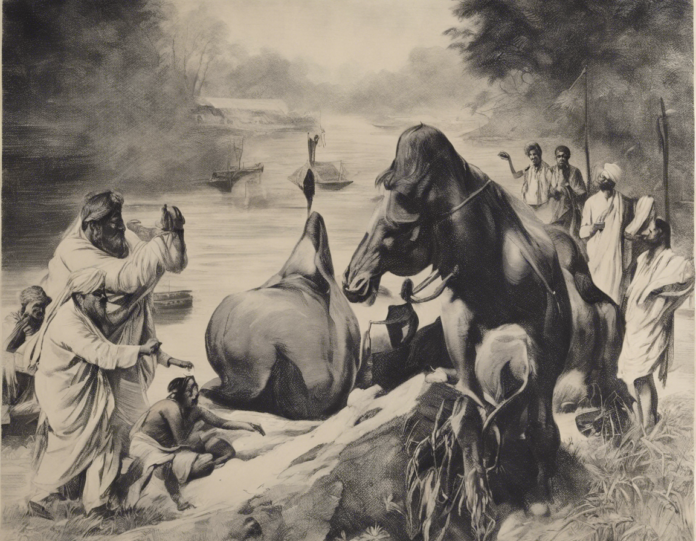As a skilled translation expert, I understand the significance of accurate and precise translations from English to Hindi. The process of translating a language is not just about substituting words; it involves capturing the essence, tone, and context of the original content to ensure the message remains intact. In this comprehensive guide, we will delve into the intricacies of English to Hindi translation, explore common challenges faced, and provide valuable insights to help you navigate through this linguistic journey.
Understanding the Basics of English to Hindi Translation
Translating from English to Hindi involves converting text from one language to another while preserving the meaning and expression. The Hindi language, with its rich cultural heritage and diverse dialects, presents unique challenges for translators. Here are some key points to consider:
1. Grammar and Syntax
One of the critical aspects of translation is ensuring proper grammar and syntax. Hindi has a different sentence structure compared to English, with verbs often placed at the end of the sentence. Understanding these nuances is crucial for accurate translation.
2. Cultural Nuances
Translating involves more than just words; it also entails conveying cultural nuances. Certain expressions or idioms in English may not have direct equivalents in Hindi. Translators need to be culturally sensitive to accurately convey the intended meaning.
3. Tone and Style
Every language has its unique tone and style. Translators must adapt the tone of the original text to maintain the intended message in Hindi. Whether formal, informal, professional, or casual, the tone plays a significant role in effective translation.
Challenges in English to Hindi Translation
Translating between English and Hindi is a rewarding yet challenging task. Here are some common challenges faced by translators in this language pair:
1. Idiomatic Expressions
English is replete with idiomatic expressions that may not have direct translations in Hindi. Translators must find culturally appropriate equivalents to ensure the message is conveyed effectively.
2. Technical Vocabulary
Translating technical terms or industry-specific jargon can be tricky. Maintaining accuracy and consistency in translating technical vocabulary requires a deep understanding of both languages.
3. Dialectal Variations
Hindi has several regional dialects that differ in vocabulary, syntax, and pronunciation. Translators must be adept at choosing the right dialect to resonate with the target audience.
Tips for Effective English to Hindi Translation
To excel in English to Hindi translation, consider the following tips:
1. Enhance Vocabulary
Expand your vocabulary in both English and Hindi to accurately convey the intended meaning. Use reliable dictionaries and language resources to improve your word bank.
2. Contextual Understanding
Understand the context of the content to capture the essence of the message. Contextual awareness is crucial for producing high-quality translations.
3. Proofreading and Editing
Review your translated content thoroughly to ensure accuracy, coherence, and consistency. Editing plays a vital role in enhancing the quality of translation.
Frequently Asked Questions (FAQs) about English to Hindi Translation
1. Can machine translation tools replace human translators for English to Hindi translation?
While machine translation tools have improved significantly, they cannot match the nuanced understanding and cultural sensitivity of human translators. For accurate and contextually appropriate translations, human intervention is still essential.
2. How long does it take to translate a document from English to Hindi?
The time taken for translation depends on various factors such as the length and complexity of the content, the subject matter, and the translator’s proficiency. On average, a professional translator can translate around 2,000 to 2,500 words per day.
3. Is certification necessary for a translator to work on English to Hindi translation projects?
While certification is not mandatory, having relevant certifications or credentials can enhance your credibility as a translator. Clients often prefer working with certified professionals for quality assurance.
4. How can I ensure the confidentiality of my English to Hindi translation projects?
To ensure confidentiality, work with reputable translation agencies or freelancers who offer confidentiality agreements. Additionally, consider using secure file transfer methods and encrypted communication channels for sensitive content.
5. What are the typical rates for English to Hindi translation services?
Translation rates vary based on factors such as the complexity of the content, the volume of work, and the translator’s experience. On average, translation services can range from $0.05 to $0.20 per word, depending on the project requirements.
Conclusion
English to Hindi translation requires not just linguistic expertise but also cultural sensitivity and contextual understanding. By following best practices, mastering language nuances, and staying updated with language trends, translators can excel in conveying messages accurately and effectively. Whether translating legal documents, marketing materials, or technical content, the art of English to Hindi translation opens doors to connect cultures and bridge communication gaps.

